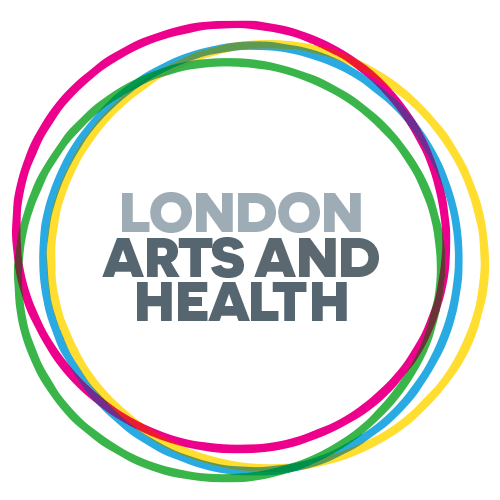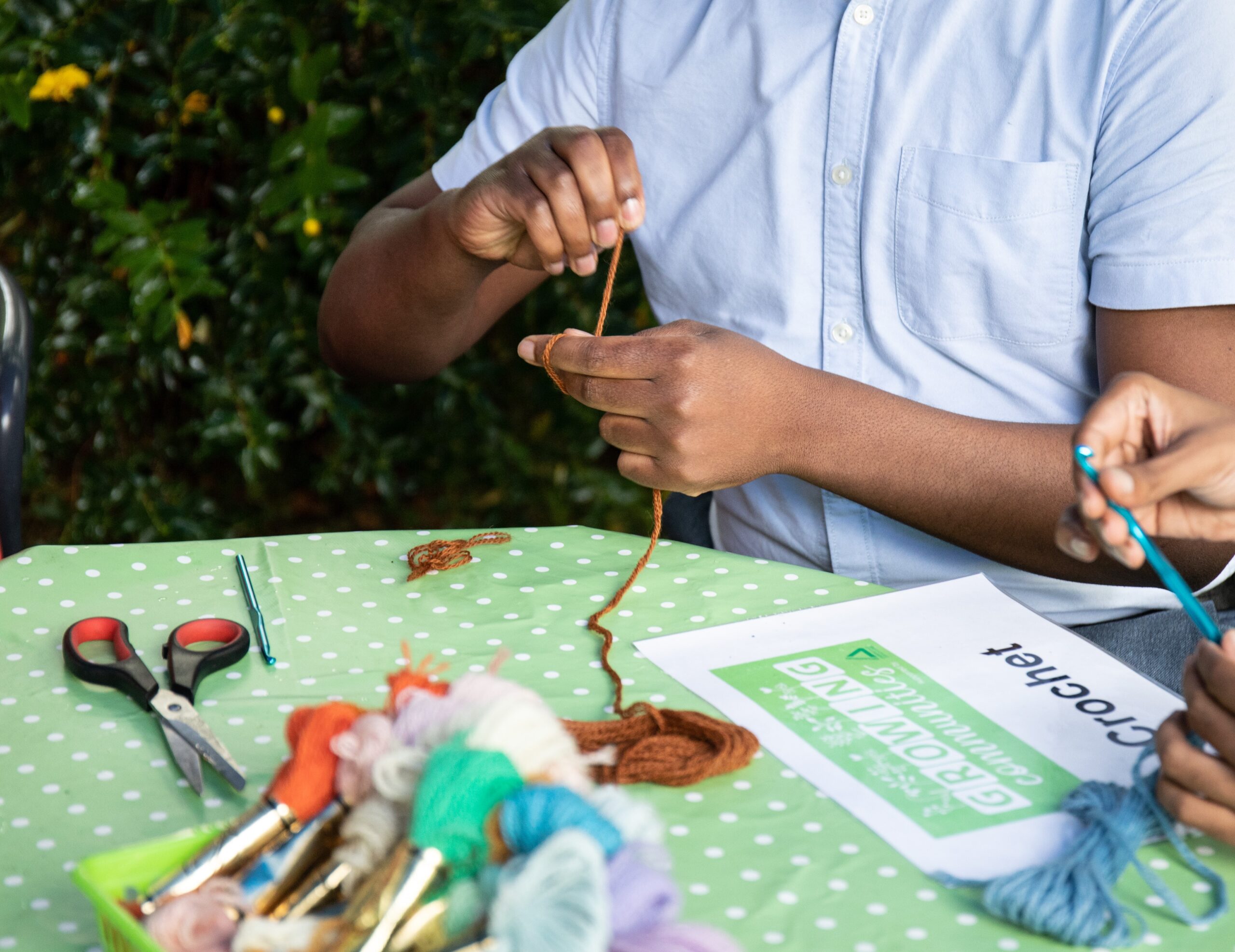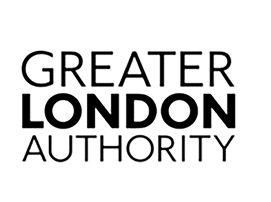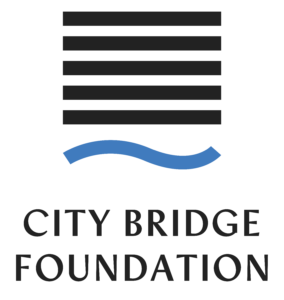Maddie Rose is a UCL MASc Creative Health graduate, during her time there she focused on the intergenerational nature of Crafts and how they are a powerful tool for building relationships and improving wellbeing. She is now the Programme and Evaluation Lead for Creative Health Camden, an arts and health charity that works in partnership with the NHS to deliver the people of Camden free and accessible creative sessions. When she is not working she is often found with yarn in her hands and shares her love of crafts on her Instagram (@thimblebee). In this member essay Maddie explores the boundaries of lived experience (LE), and how participants and their lived experience might be protected and respected in Creative Health work.
With many thanks to Maddie for this essay.
Lived Experience (LE) is often utilised in the Creative Health (CH) world.
It’s seen as something that is really useful to the work and almost as something to strive-for, precious in fact. Yet, there is little – to no – protection of it. The amount of job applications I have seen with the words ‘ideal candidate will have LE of X’ is immeasurable. Yet, there seems to be a lack of awareness around exposing LE, or rather expecting it. After all, LE is describing the real-life experience of someone who has gone through a particular health condition. But it seems we are often expected to wear our LE on our sleeve to give our work – or words – more credibility. But, at the end of the day, what’s my, or anyone’s, LE got to do with it?
I am a worker in the CH sector, along with being a graduate from the MASc in Creative Health at UCL. The term LE has echoed around my head for the past two years. During my time at UCL I heard a lot about LE, how it is a valuable insight into the lives our CH practices are impacting. Whist I do not deny that, I think how it is utilised by us in the CH sector perhaps requires some reflection. I work at Creative Health Camden, an arts and health charity based in North London. We deliver wellbeing sessions that aim to support our patients by using creativity to improve their health. Every day I am met with my patients complex and diverse LE, they often tell me stories of their lives, some of which can be quite troubling, and some quite inspiring. Yet, that’s where the use of their LE does, and should end. I, as a CH professional should never pass along these stories I hear during our sessions to ‘prove’ the work that I do is impactful. Yet, I am aware of situations where us CH workers feel like we need to offer up our, or our participant’s, LE to give justification to our work.
I think there is a clear cause to this, however. Arts and Health is a sector where we are often fighting to get our projects funded, and we fill in many lengthy funding applications. So, a LE story of one of our participants can add some humanity to our project, that we are so desperate to get funded. We are also a sector that can sometimes struggle to bring together the evidence base and the artistry to reflect the effectiveness of our work. Again, LE stories make a great evidence tool, and I am not ignorant to the fact that we need to offer our funders evaluation of the sessions they are funding. However, there should be more rigorous guidelines to sharing LE. In terms of providing evidence, our collection and usage of LE should be transparent to our participants and come with informed consent, they should be involved in the telling of their own LE and be aware of what conversations may be used by and how they may be shared.
As I mentioned previously, I work at Creative Health Camden. We work in partnership with the James Wigg Group Practice – a GP surgery in Kentish Town Health Centre. When I started my role here, I often took guidance from the GPs in terms of how we discuss our participants – their patients. After all, they have had formal training in this, and they have rigorous guidelines. The thing I have realised is that they don’t talk about patients’ history unless it is truly pertinent to their care, like, at all. Seeing as we are also a type of healthcare worker, we should perhaps start setting stricter guidelines for ourselves.
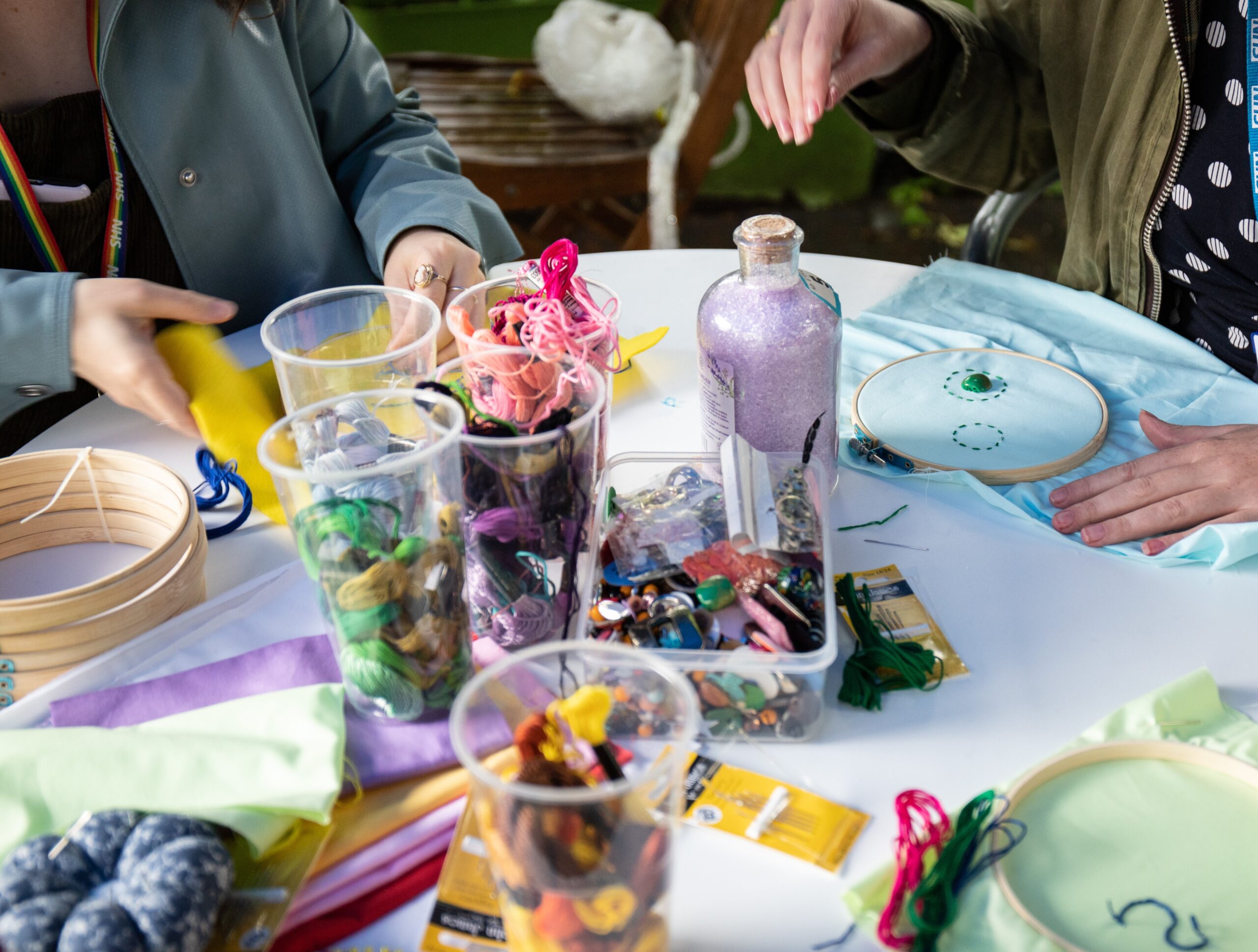
However, if you’re not as lucky as me to work in partnership with the NHS and would like to seek more guidance on how to do this, there are incredible organisations in the sector that are shining examples of what we should be doing. The obvious one being LENs, they are a collaborative, LE organisation, which facilitate the co-production of those with LE and services that LE impacts. LENs puts the LE of their staff and participants at the forefront of what they do (it’s even in their name!). The key thing that they have done, is make their use of LE so very clear that everyone knows what they are going into. Participants are informed, can have control over their narrative and are aware of how their stories will be used. It is critically different from a participant telling me a story, and then me feeling like I can share it with fellow sector workers at a conference. Another example I often reflect upon, is the work of Kiz Manely at UCL. Most of you may know her for her incredible work with Hip Hop Heals, but she is also the ‘Lived Experience and Programme Coordinator’ within the AHRC/UKRI’s research team at UCL. I personally saw her advertisement for paid opportunities on her LE advisory board for UCL. It was clear, it had boundaries and it was incredibly transparent, and because of her clarity I could make the informed decision that it wasn’t for me, and it passed it along to my colleagues. I made that decision for myself, and we should ensure we are allowing our participants to do the same.
Lastly, workers in this sector are often involved because we know first-hand the impact that creativity can have on our health and wellbeing. This seems to be an open secret, we were often saved by creativity ourselves, and we want to encourage that for others. So, I urge everyone to reflect upon their current LE practices, for their participants, but also, for your stories too. Everyone’s LE deserves protection, including yours.
Written by Maddie Rose.
